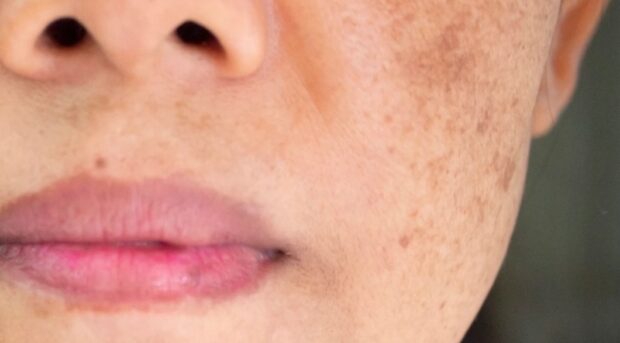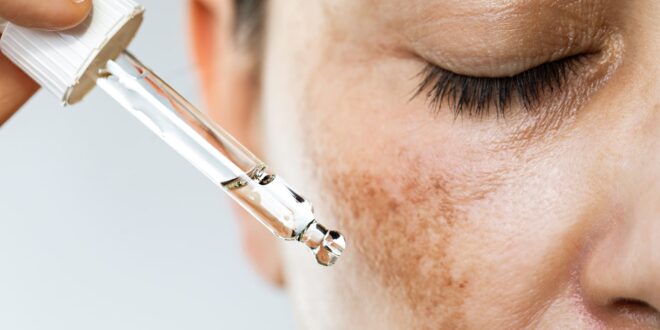Melasma can feel like an uninvited guest who refuses to leave. Those stubborn patches of hyperpigmentation, usually on the face, can make us feel self-conscious or frustrated. But have you ever wondered if your genetics might be playing a role? Let’s embark on the journey to demystify this condition and unravel the truth about whether your DNA could be a major player.
In this blog, we’ll delve into the complexities of melasma, explore its genetic links, and navigate how you can manage it effectively. Stick around—we’re going to dive deep, but I promise it’ll be worth it.
What Is Melasma?

First, let’s understand what we’re dealing with. Melasma is a skin condition that causes dark, blotchy patches, often on the face. It’s most common in women and often appears during hormonal shifts, like pregnancy or when using birth control. But hormones are only part of the story.
This condition is tied to melanin—our skin’s natural pigment. Melanin production can go haywire for various reasons, resulting in those signature dark patches. But could genetics be one of those reasons?
Is Melasma Hereditary?
Here’s where things get interesting. Studies suggest there is a genetic component to melasma. If someone in your family—your mom, aunt, or even grandmother—has melasma, you’re more likely to develop it, too.
The Genetic Link
- Family History Matters: Research shows that people with a family history of melasma are at higher risk. If your mom or dad had it, those genes might have passed down to you.
- Skin Type and Ethnicity: Melasma is more common in people with darker skin tones—particularly those of Asian, Hispanic, Middle Eastern, or Mediterranean descent. Genetic predisposition plays a significant role in determining who develops melasma and how severe it gets.
Understanding this can feel like a lightbulb moment. If you’ve ever wondered, “Why me?”—well, now you might have an answer.
What Else Triggers Melasma?

Genetics might set the stage, but it’s not the sole performer. Melasma is often the result of multiple factors, like:
- Hormonal Changes: Pregnancy, birth control pills, and hormone replacement therapy can all trigger melasma.
- Sun Exposure: UV rays stimulate melanin production, making melasma worse.
- Stress: Believe it or not, chronic stress can also worsen skin conditions, including melasma.
- Skincare Products: Certain cosmetics or skincare products can irritate the skin, potentially triggering those dark patches.
It’s like a puzzle where genetics is one piece, but there are many others to fit together.
Navigating the Complexities of Melasma
Understanding melasma’s causes is only half the battle. Managing it is where the real work begins. Let’s dive into the ways you can address it, whether it’s genetic or not.
1. Protect Your Skin from the Sun
I can’t stress this enough: sunscreen is your best friend. UV exposure is one of the biggest culprits behind melasma flare-ups. Choose a broad-spectrum sunscreen with SPF 50 or higher, and don’t forget to reapply every two hours.
2. Consider Professional Treatments
Professional treatments can make a big difference. Options like chemical peels, laser therapy, and microdermabrasion can help reduce melasma’s appearance. It’s important to consult with a dermatologist to figure out what’s right for you.
If you’re ready to explore melasma treatment options, check out melasma treatment.
3. Use Brightening Skincare Products
Look for products with ingredients like:
- Vitamin C (a natural brightener)
- Niacinamide (reduces pigmentation)
- Kojic Acid (blocks melanin production)
4. Address Underlying Hormonal Issues
If hormones are driving your melasma, talk to your doctor. They might recommend adjusting your birth control or exploring other ways to balance your hormones.
Navigating Emotional Complexities
Let’s be real: melasma isn’t just a skin-deep issue. It can take a toll on your self-esteem.
- Practice Self-Compassion: You’re not alone. Millions of people live with melasma, and it doesn’t define your worth.
- Find Support: Joining online forums or groups can help you connect with others who understand what you’re going through.
- Seek Professional Help: If melasma is impacting your mental health, don’t hesitate to talk to a therapist.
Unraveling the Myths About Melasma

It’s easy to fall for myths about melasma, especially with so much misinformation online. Let’s set the record straight and demystify these common misconceptions:
Myth 1: Melasma Is Permanent
The truth? Melasma is not necessarily permanent. With the right treatment plan, tailored to your unique skin and triggers, melasma can fade significantly. While it might not always disappear completely, many people achieve dramatic improvements through consistent care, professional treatments, and proper sun protection.
Myth 2: Only Women Get Melasma
Yes, women—particularly during hormonal shifts—are more prone to melasma, but let’s not exclude men. Men can absolutely develop melasma too. The condition may be less common in men, but factors like sun exposure and genetics can still contribute to its onset.
Myth 3: Tanning Makes It Better
Let’s squash this one: Tanning is one of the worst things you can do if you have melasma. Those golden rays may temporarily darken your skin evenly, giving the illusion of “blending in” the patches. But in reality, tanning stimulates melanin production, worsening the discoloration and making melasma more noticeable over time.
Myth 4: Melasma Only Affects the Face
While melasma most commonly appears on the face—especially the cheeks, forehead, and upper lip—it’s not confined to it. It can show up on other areas exposed to the sun, like the neck, shoulders, and arms.
Myth 5: Over-the-Counter Creams Will Cure It
Although some over-the-counter products can help lighten melasma, there’s no one-size-fits-all cure in a jar. Effective management often requires a combination of approaches, including professional treatments like chemical peels or laser therapy, prescription creams, and lifestyle changes like diligent sun protection.
Final Thoughts
Melasma is complex, and its causes—like genetics—can feel out of your control. But understanding its roots empowers you to take charge. Whether you’re genetically predisposed or dealing with hormonal or environmental triggers, solutions are available.
Remember, melasma doesn’t have to define you. You’re beautiful, and your skin is just one part of your amazing story. Let’s continue to unravel its mysteries together.
 Jewel Beat
Jewel Beat

